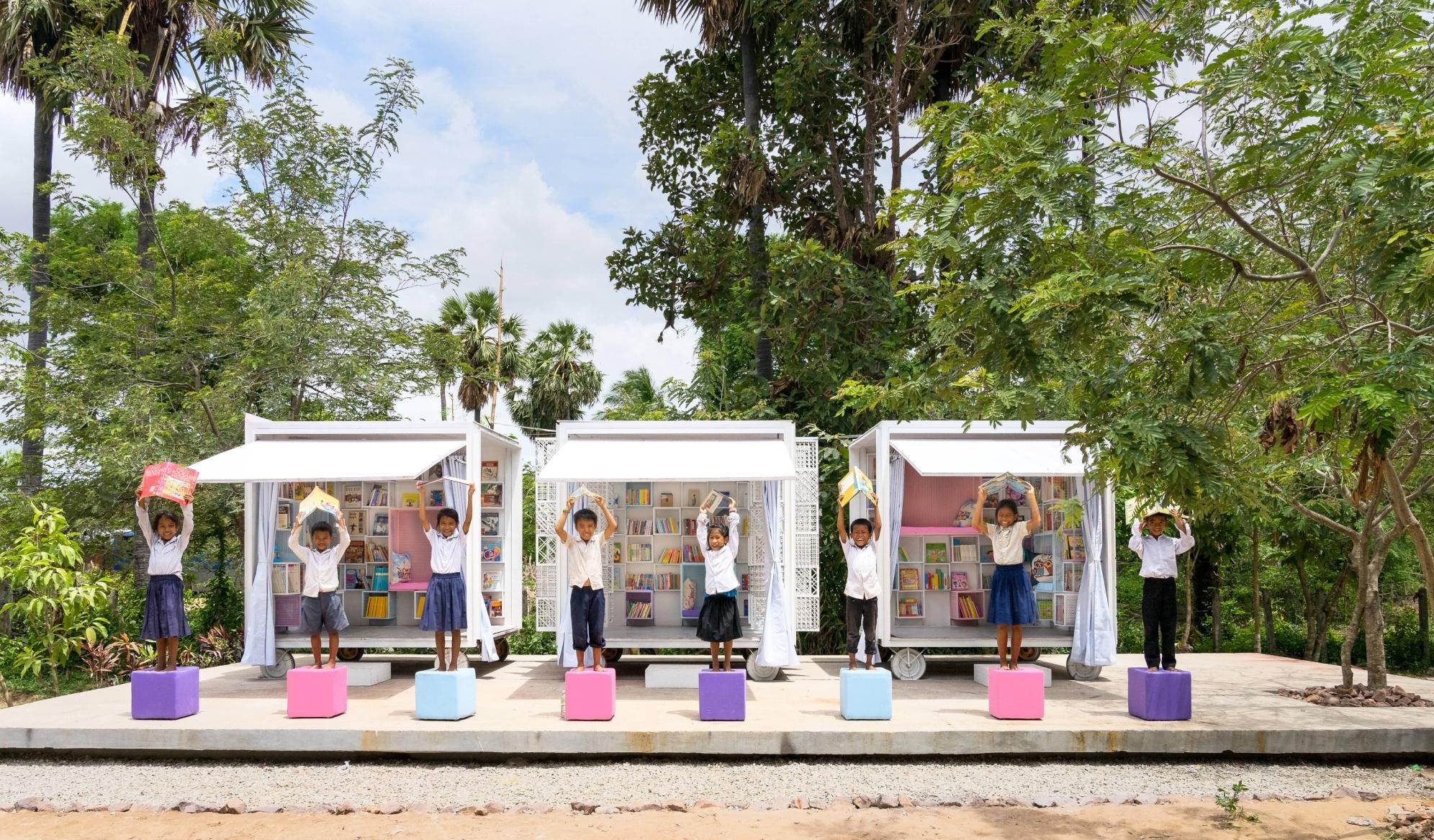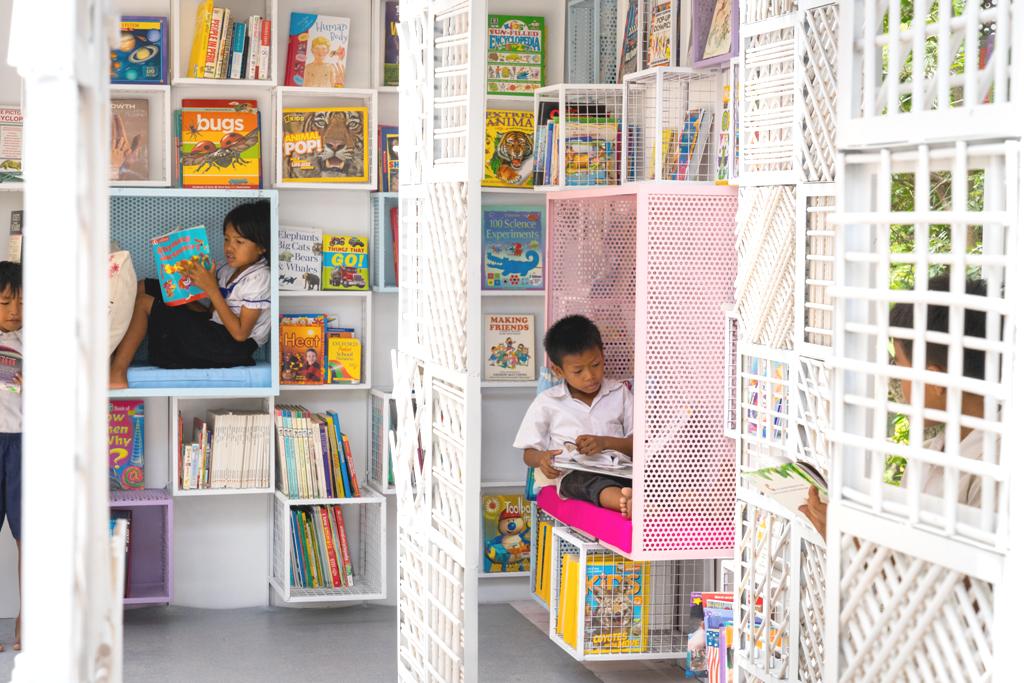
Project Name: More than just a Library
Location: Siem Reap, Cambodia
Date Designed: 2017
Date Completed: 2018
Size: 26,500 sqm
Client: Östersund Municipality, Diös
Programme: Culture
ABOUT IX Architects
IX Architects Pte Ltd (IXA) is a corporatized architectural practice registered with the Board of Architects, Singapore. IXA is also listed under the panel of Consultant for Public Sector projects with the Building and Construction Authority. From our humble beginnings in 2004, we are now a well-established and recognized regional architectural practice. IX Architects Pte Ltd excels on providing professional architectural services with personalized, quality touches. IXA’s achievement of the International Standards Organization (ISO) – ISO9001 and ISO14001 accreditation in 2011 further cement our commitment to quality services. They strive to design and deliver high standard and creative works that are responsive to client’s needs and budget.
ABOUT More than just a Library
Books and Cubes is a learning space designed to inspire the children of rural Cambodia. Nestled quietly on a primary school campus, students can use this library in all weathers and even during electrical shortages. Despite being in a pure cube form, the library embraces the entire site and complements other school activities.

More than just a Library
Interview with CHU Yang Keng of IX Architects
Interview Transcript
Q1: What sparked your passion for social issues and using architecture as a medium? Specific project (More Than Just a Library).
Corporate Social Responsibility has always been part of our company’s culture since its inception in 2004. We conducted a fundraising for an orphanage in Vietnam and visited the children as an office in the year 2008. This was followed with our involvement with our local Sun Love Home, as an event sponsor as well as helping out on food distribution on an ad-hoc basis.
We are thankful for the opportunities to work on projects in Phnom Penh city for the past 10 years. The humble library project is just a small way of giving back to the people of Cambodia. I just thought as an architect I could contribute in a meaningful way that also puts my skills to the best use.
Q2: What are some social issues in Cambodia that could benefit from an architectural intervention? Can design solve some of these pressing issues developing countries face?
The majority of underprivileged people in developing countries do not have access to and any form of contact with an architect. The project we did was very much a modest but direct contribution to a small underprivileged community.
Yes, good design can definitely enhance the wellbeing of the people at large and allow for resources to be put to optimal use. Essentially, we wish that our humble intervention can raise awareness and inspire more of such improvements to be initiated.
Q3: What inspired your team to conceptualise the “More Than Just a Library” project?
We are certain that education is a sustainable way for children to exit the vicious cycle of poverty. Having completed a few library projects in Singapore, we wanted to explore a library that could be fabricated off-site and transported to a remote rural place economically, quickly and readily to be used. In addition, we strive for a library that responds to the deficiency of a rural context and remains as a sustainable facility in the long term.
Q4: An interesting point posted on the firm’s website is that 44 NGOs have been approached to sustain, operate and manage the Library in the long run. CCDO was then chosen as the primary beneficiary. We would love to know the selection process and what was performed to ensure a large extent of credibility as well as continued participation of stakeholders could be achieved?
The fact was the majority of the 44 NGOs did not respond to us, as probably it was unbelievable that an architecture firm so far away was giving away a library. I did a visit to the shortlisted organizations personally, to ensure that the chosen one was indeed in need of the proposed project. It was also necessary to make sure that the organization had the relevant support to run a programme and upkeep the library in future.
Q5: Were there difficulties trying to communicate with the local community prior to commencing the project, e.g. when interviewing children using the space? What are other challenges and constraints that cropped up/typically arise in social architecture projects and how were they combated?
The process was generally enjoyable and my regular visits to the site helped to put across the expectations of the delivery. However, even while operating on a comfortable pace we still faced a critical problem halfway through the construction phase. The builder, who had all along been very supportive of this project, got into financial difficulty. He avoided all communication despite the completion deadline drawing near and I had to make a personal visit to his place to resolve his personal problem together. Otherwise, we are thankful that our partner CCDO on the ground was very cooperative to facilitate the involvement with the school and community.
Q6: Could you please share more about your latest project? How it started and evolved over the course? What are some learning points to takeaway from it. Sustainability of the project and future plans?
We are currently working on a tertiary educational complex in Phnom Penh. This is a formal and forward-looking institutional project. Our nature-centric design approach aims to allow the user to have a close connection with the environment, and we also injected programmes that encourage social interaction and growth.
Q7: Following the success of the More than just a Library project, how do you think the lives of the community will change with the introduction of the Library? How does one ensure architectural resilience, especially when it comes to trying to impact the lives of these children in the long run? Did you observe any new social behaviours that arose from the project implementation?
We involved the school community during the process and hoped that they would take pride in their library. We were heartened to learn from the videos sent by the school that the children love the completed library very much. We gathered that many children prefer our library to the playground next to it. The school volunteers have also used the space as an outdoor learning space, rather than just a place for books.
Besides the school community, the project has also benefited the 25 of us from Singapore who attended the handing over ceremony. Our group comprised of my colleagues as well as 5 young Singaporean families with 11 children in total. It was an enriching experience for all of us, and definitely a good exposure for all our kids.
Q8: The design fabrication of screens really stood out. As the implementation of the traditional craft was supported and performed by the locals, were there instances where certain designs were preferred over the other, and if so, how were these designs reconciled at the end? If not, how did all the designs come together to form the cube facade?
There was a strong intent to reflect the essence of the Khmer culture and give it an inspirational feel. Our team of designers came up with a few 1:1 scale mock ups using actual rattan in our office, in order to understand the nature and limit of the material. It was an exploratory process with reference to Khmer daily household items found in the rural area. We tested numerous designs and eventually settled with 36 designs that appear rich in texture, and yet could be achieved economically.
Q9: Will IXA continue to participate in social projects internationally? Do you see a possibility in extending the same value of community work in the context of Singapore? What might the reason for the lack of community work in Singapore be attributed to? How can the community actively contribute to social schemes apart from monetary contributions?
We certainly wish to continue to pursue social projects in the region and locally where possible.
There are many community initiatives around in Singapore. However, works related to our built environment are regulated tightly and we wish there could be more room and support for ground-up initiatives. I feel we are generally better off than people in the developing countries. More attention could be channeled to the needy in our neighbouring countries that do not even have the fundamentals such as having a latrine in a house.
I believe that collectively we can be a stronger team if we collaborate. We just have to spread the message and get it going. I am very glad that the library project has been an encouraging one and it motivated me to lead another humanitarian project on the provision of 100 latrines in early 2020. It was a project that brought together more than 20 Singapore architects and friends, as well as more than 100 Cambodian villagers and students. We faced challenges too but I have learnt that nothing can stop us if we do it wholeheartedly and persevere on. The truth is we take away far more than what we have given.